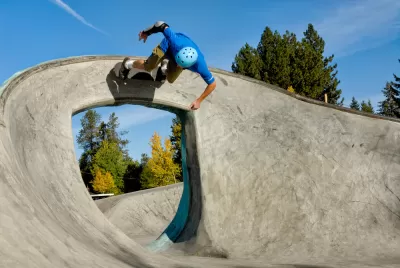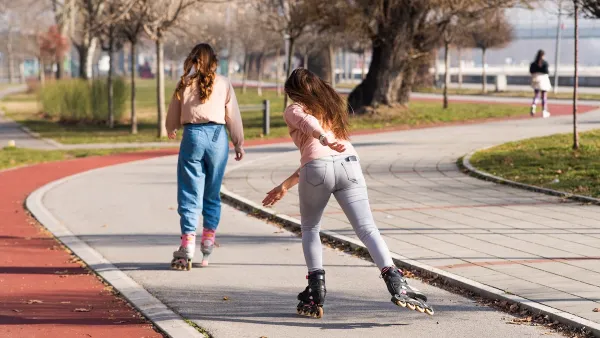Skateboarding is becoming a legitimate part of the urban landscape by revitalizing public spaces and engaging young people and the broader community.

In many cities around the world, skateboarding was considered an activity on the fringes that should be prevented or policed. "But today, a growing body of evidence shows that skateboarding can help attract investment, reclaim public spaces and create resilient communities," writes Chris Lawton.
Skateboarding has empowered youth through after-school programs and partnership with municipalities to design and build infrastructure. In Tempere, Finland, skaters worked with the local government on a series of skatepark projects that also provided employment opportunities. "The city’s tourism agency now uses skateboarding in its marketing. Skater and academic Mikko Kyrönviita sees this as a wider example of 'DIY placemaking' – where local young people help shape the way the city is marketed to visitors, and how urban space is designed and managed," writes Lawton.
Proponents also argue that skateboarding helps foster more diverse, mixed-use cities. Skateboarding is an asset to cities that energizes public spaces and engages communities through planning and use, according to Lawson. "Michael Barker, a New York skater and architect, advocates soft-edged spaces ‘seamlessly integrated into the life of a city’ (as opposed to the ‘hard edges’ of traditional skateparks), to help address the loss of the urban commons."
FULL STORY: Skateboarding’s DIY ethos is kick-starting a new wave of urban regeneration

Planetizen Federal Action Tracker
A weekly monitor of how Trump’s orders and actions are impacting planners and planning in America.

Maui's Vacation Rental Debate Turns Ugly
Verbal attacks, misinformation campaigns and fistfights plague a high-stakes debate to convert thousands of vacation rentals into long-term housing.

San Francisco Suspends Traffic Calming Amidst Record Deaths
Citing “a challenging fiscal landscape,” the city will cease the program on the heels of 42 traffic deaths, including 24 pedestrians.

Amtrak Rolls Out New Orleans to Alabama “Mardi Gras” Train
The new service will operate morning and evening departures between Mobile and New Orleans.

The Subversive Car-Free Guide to Trump's Great American Road Trip
Car-free ways to access Chicagoland’s best tourist attractions.

San Antonio and Austin are Fusing Into one Massive Megaregion
The region spanning the two central Texas cities is growing fast, posing challenges for local infrastructure and water supplies.
Urban Design for Planners 1: Software Tools
This six-course series explores essential urban design concepts using open source software and equips planners with the tools they need to participate fully in the urban design process.
Planning for Universal Design
Learn the tools for implementing Universal Design in planning regulations.
Heyer Gruel & Associates PA
JM Goldson LLC
Custer County Colorado
City of Camden Redevelopment Agency
City of Astoria
Transportation Research & Education Center (TREC) at Portland State University
Jefferson Parish Government
Camden Redevelopment Agency
City of Claremont





























